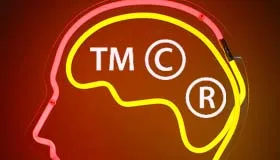How to draft End User License Agreements?

However, as we descend the depths of law, and if the 'User' takes the trouble of reading the 'End User License Agreement' or EULA, something we seldom do, it is evident that the developers are only licensing a copy to us. A license is essentially a 'permission' from the software developer to use the software in a specified manner for a particular period of time for the payment of a specified fee. The software license agreement is a very powerful instrument, as it governs all the parameters of the deal between the Licensor, who is the developer, and the licensee, who is the end user.
While many of us consider the task of reading the End User License Agreement an onerous one, preferring to directly press the 'Accept' button instead, it does not mean that its drafting should receive only cursory importance. A good EULA should begin with special note, stating that the very clicking of the 'Accept' button shall amount to an acceptance. This is in line with the provisions of the Indian Contract Act, 1872 which does not require the contract to be written and signed upon. Acceptance can be express or implied, oral or written, or by conduct. Thus, once the 'Accept' button is clicked, the very act of using the software signifies acceptance on part of the licensee (or user).
The EULA must be drafted in such a manner so as to protect the interests of the Licensor (or Software Developer) in the maximum possible manner. To draft an effective EULA, the following points should be clearly set out in the Agreement:
- Product Specifications
- Type of License – In case of multiple versions, specific version-wise licenses must be given
- Duration of License – the exact time of commencement and termination
- Grounds of termination - on what grounds can the Licensor terminate the license
- Specifications of the Limited Warranty to be provided by the Licensor
- Legal Jurisdiction
Let us now go over these points in brief:
While drafting the Product Specifications, it is extremely important to specify the nature of the product, its trademarks, its features (if appropriate) and the nature of functions it gives to the user.
Many software come in different versions, with the most usual form of difference being the type of user – individual home users and Enterprise Users. License Agreements for Enterprises are more complicated than those for home users. This is because an enterprise software will be used by a number of employees. Since individual agreements cannot be entered into with every employee of the enterprise, the best way forward would be to make the employer, which in this case is the Enterprise, the licensee. The Agreement will be so drafted so as to hold the Enterprise vicariously liable for the acts of its employees using the software. We will cover Enterprise License Agreements in greater detail in my next article for YourStory.
The duration of license is extremely important. Many programs such as the Anti-virus we find on our Windows PCs have an annual license. When preparing the EULA, the start time of the License must be dated in a fool-proof manner. This is because many users may be able to bypass this by altering the time and date settings on their computers or formatting their disks, the best way forward would be to require the user to compulsorily register his software copy online on your corporate website. This registration should only be possible once the software is installed. In case the License is for a limited period of time, the start period can be from the exact time and date of registration of the user copy.
The beauty of contract law is that it confers freedom to even choose the law that governs your agreement – a benefit we as citizens rarely get. Indeed, an Indian software company can maximize its advantage and convenience by expressly stating that both parties to the EULA agree to be bound by the laws and regulations of the Union of India. The appropriate courts which may be approached in the event of a dispute should be that civil court under whose jurisdiction the registered office of the Indian IT company falls.
While many of us balk at the idea of going to court to enforce one's legal rights, given the enormous delays faced by ordinary litigants in the country, a powerful solution to this problem is emerging in the form of 'Alternative Dispute Resolution'. Commonly known as 'Arbitration' it is governed by the provisions of the Arbitration and Conciliation Act, 1996. In arbitration, both parties can agree to appoint a private person, preferably a qualified lawyer, as an arbitrator. This arbitrator functions like a private judge – an exclusive courtroom in which hearings and appearances can be fixed in accordance with the convenience of the parties. In case a dispute arises, the matter is referred to this arbitrator, who gives a speedy judgment after a few hearings. Once this judgment, known as 'Arbitral Award', is delivered, then it cannot reheard in the Civil Court. The party in whose favour the arbitral award goes can apply for its enforcement as a decree under the Code of Civil Procedure, 1908. We will discuss more about Arbitration in a future article.
Finally, while we will try to get the maximum advantage for the software developer in terms of clauses, it is also important to understand the system in which today's softwares operate. With the emergence of cloud computing, the era of installation on Standalone PCs is gradually being supplemented by the storage of data and programs on cloud servers. This way, a program can be accessed and run from anywhere. Since the software is the front end, there are many back-end components which way not be in favour of the Developer or Licensor. Such components may be the Cluster Server, which is usually handled by third parties, the quality of the network connection – which is the responsibility of the ISP, protection against viruses, which is the domain of the antivirus etc. Any shortcoming on their part could cause the licensee to lay blame on the licensor, alleging that the software has not performed as per the licensor's representations.
Therefore it is extremely importance to include a clause which details:
- The various Third-Party components required by the Software to Function.
- A Statement by which the Licensor expressly excludes himself from bearing responsibility for the proper functioning of those Third-Party components.
In this article we covered the basics and the essential elements of an End User License Agreement. In my next article we will go deeper into the details of Enterprise-License Agreements, which are more important than EULAs primarily because Enterprise Licenses from the major chunk of the revenue stream for IT companies. Please feel free to contact me for further clarification at [email protected].
- Aditya Singh







